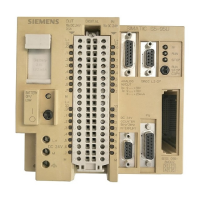Product overview
1.3 CPU feature differences
S7-200 SMART
System Manual, V2.3, 07/2017, A5E03822230-AF
23
The S7-200 SMART V2.3 CPU family includes twelve CPU models, separated into two lines:
the Compact Line and the Standard Line. The first letter of the CPU designator indicates a
line, either Compact (C) or Standard (S). The second letter of the designator indicates AC
power supply / relay outputs (R) or DC power supply / DC transistor (T). The number in the
designator indicates the total onboard digital I/O count. The new compact models are
designated by a lower case "s" character (serial port only) following the I/O count.
The CPU CR20s, CPU CR30s, CPU CR40s, and CPU CR60s models have the following
differences from the standard CPUs:
● No Ethernet port: The RS485 port is now the programming port.
● STEP 7-Micro/WIN SMART uses a USB-PPI cable to program the CPU through the
RS485 port.
● The CPUs reserve one connection for the STEP 7-Micro/WIN SMART programmer
connection.
● No CPU instructions that require an Ethernet port
● No support for data logs
● No real-time clock
● No microSD card reader
● No signal board support
● No signal module support
● No 24 V DC sensor supply
● No motion control
● Support for only PROFIBUS/RS485-capable HMIs
● 12 KB of ladder memory and 8 KB of V memory
● Retentive memory limited to 2 KB
Because the CRs models have no Ethernet port, the RS485 port is the programming port.
STEP 7-Micro/WIN SMART uses the USB-PPI cable to program the CPU. You can now
program any CPU over all serial ports, including the PROFIBUS DP01 modules.

